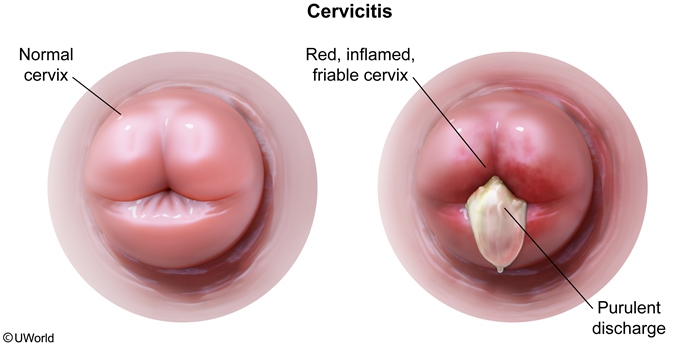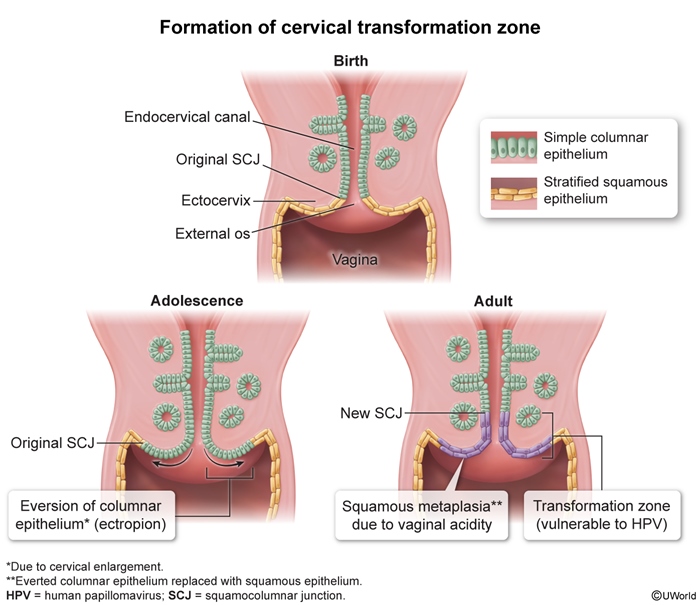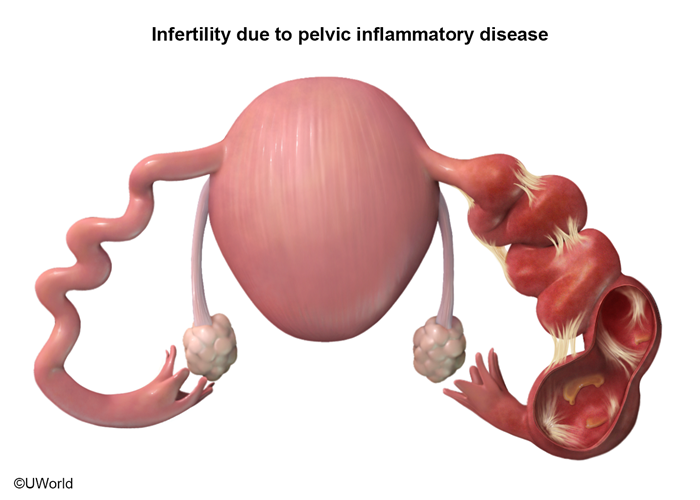Acute Cervicitis
Article Sections
Introduction
Acute cervicitis refers to inflammation of the uterine cervix, which most commonly occurs due to infection with Chlamydia trachomatis or Neisseria gonorrhoeae. Symptom presentation is variable, ranging from asymptomatic to classic mucopurulent discharge and cervical friability.
Pathogenesis and risk factors
Most cases of acute cervicitis are caused by infection of the endocervical glands and the ectocervix, which results in disruption of the normal cervical epithelium and leads to tissue inflammation and damage. By far the most common causative organisms in acute cervicitis are C trachomatis and N gonorrhoeae; other, less common etiologies include Trichomonas vaginalis, herpes simplex virus, and Mycoplasma genitalium. Risk factors for acute infectious cervicitis include:
- High-risk sexual behavior (ie, no barrier contraception, increased number of sexual partners)
- Age <25
- Prior sexually transmitted infections (STIs)
Continue Learning with UWorld
Get the full Acute Cervicitis article plus rich visuals, real-world cases, and in-depth insights from medical experts, all available through the UWorld Medical Library.
Figures


